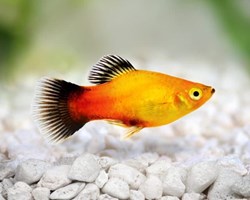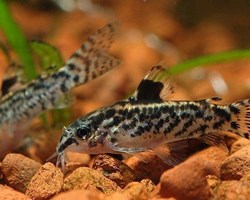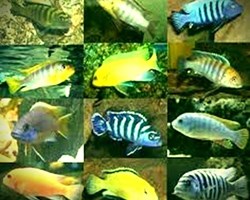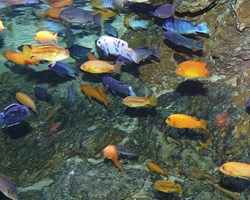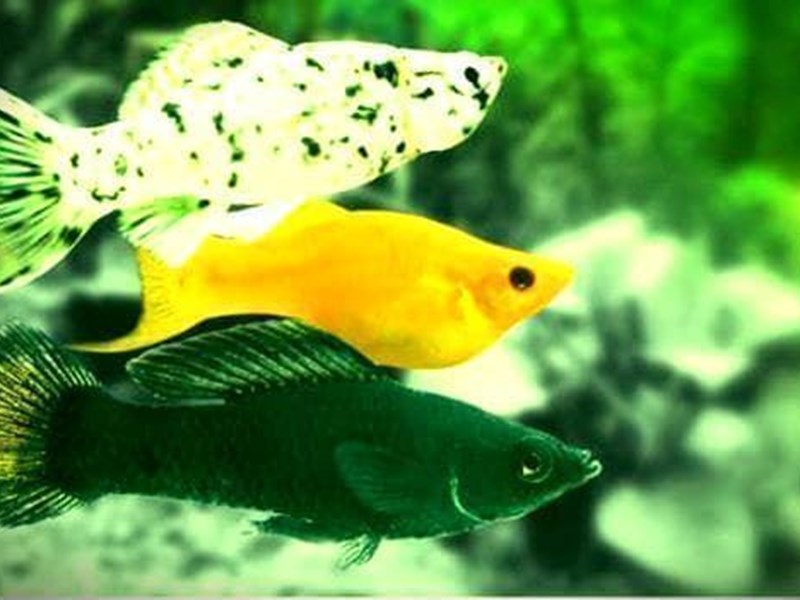
DESCRIPTION OF THE MOLLYS:
Mollys belong to the well-known family of Poeciliidae.
It is a very popular species with a great diversity of colors and a great variety of sizes, between 4 and 20 cm.
They have a very social character, which makes them perfect companions for both the freshwater community aquarium and saltwater environments.
They are native to Mexico and areas in northern South America and the southern United States.
In their natural habitat they colonize hard water with a high content of mineral salts.
They have a great capacity for adaptation, inhabiting ponds, lagoons, rivers and river mouths where they cohabit with coastal fauna.
They are an excellent choice for the beginning hobbyist due to their robustness and ease of playing.
Its first importation for the aquarium market dates back to 1900.
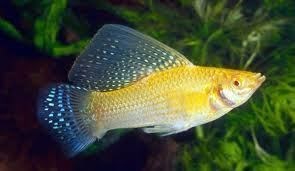
THE AQUARIUM FOR THE MAINTENANCE OF MOLLYS:
It is convenient to keep natural plants together with our fish, preferably stemmed such as the Ambulia, Limnophila sessiliflora.
When determining our plant colony we must determine the water conditions in which we will keep our Mollys, not all plants adapt easily to soft or hard water.
At Glu Glu Pet we recommend that for hard water you can choose between the Vallisnerias, Anubias or Sagitarias genera.
In very hard waters the choice would be Vesicularia dubyana or Java Moss and Microsorium pteropus or Java Fern.
Keeping natural plants is always a good idea, although they may give some respect at the beginning.
In addition to their beauty, we must maintain them because they oxygenate the water and serve as a refuge for fry and timid fish.
Mollys have a certain herbivorous tendency, so it is normal for them to touch the leaves of softer plants.
This risk can be greatly mitigated by adding vegetables to your daily diet.
If we opt for brackish water or even marine environments, we will have to do without freshwater plants and prefer macroalgae species such as Caulerpa.
Not all Mollys are adapted to brackish or sea water.
There are much more gifted species such as the Veliferous Molly.
This species maintained with sea salt is free from fungal infections to which they are sensitive, especially with low qualities of aquarium water.
Never use iodized salt for the aquarium, always use sea salts.
The filtering system should not be excessively powerful so as not to generate a lot of current.
Temperature between 20 and 27ºC, pH between 6.5 and 8 whenever new fish arrive, acclimatize them very well so that they do not suffer an osmotic shock.
Gh up to 20º.
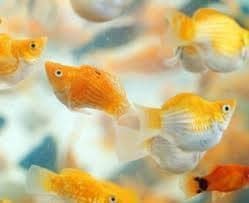

NUTRITION FOR MOLLYS:
Mollys are omnivorous fish that accept dried food in both pellets and flakes from the first moment.
They usually spend the whole day pecking at the algae that may appear between the decoration and the natural plants.
However, their main food in nature is made up of small insects and their larvae and small crustaceans.
The best way to maintain our Mollys is to give them a varied diet based on a good dried food with vegetable content and supplement two or three times a week with red or white mosquito larvae.
It is also very suitable to acquire the vegetable tablets that adhere to the glass where they will spend their time pecking at it.
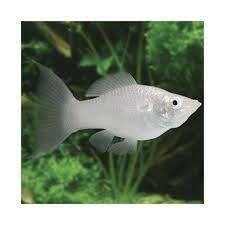
MAIN SPECIES OF MOLLYS:
Within the 120 species that comprise the Poecelidae family, 33 species are cataloged as Mollys, without counting their chromatic varieties and their morphological variations due to their professional breeding.
Among all of them, there are three that we can most commonly find:
Poecilia latipinna (Lesueur, 1821) Black Molly:
Originally, its coloration is completely black, although the development of its offspring offers us multiple colorations.
It comes from the southern United States and the Atlantic coastal part of Mexico.
It reaches maximum sizes of 6 cm.
There is a variety of the species called Marble that can reach 12 cm.
What most attracts the attention of the species is the veil fin that the males carry.
In addition to the two mentioned varieties, specimens can be found in green and grayish tones with or without speckles.
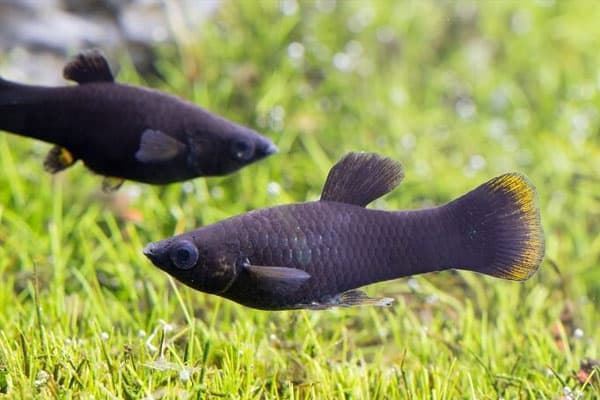
Poecilia velifera (Regan, 1914) Molly veil:
It is the largest species and can reach 20 cm.
It is native to the Yucatan Peninsula in Mexico.
It is common to find it in pairs in trade and it is undoubtedly the species with the highest price of all.
It is included in the red list of threatened species (IUCN).
It is a species that shows better general health in brackish environments.
Morphologically, what most attracts the attention of the species, apart from its size, is the extraordinary sail fin carried by the males.
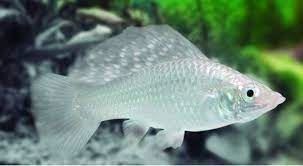
Poecilia sphenops (Valenciennes, 1846) Molly_
Although it is collected as a species in such prestigious sites as fishbase, we can really speak of the same species together with the Poecilia latipinna with whom it is common to confuse it.
It reaches a maximum size of 7.5 cm in males.
It comes from the central and southern part of America, from Mexico to Colombia.
It is usually confused with the Mexican Poecilia.
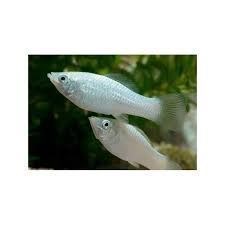
AQUARIUS COMPANIONS FOR MOLLYS:
Mollys are totally peaceful and therefore ideal for mixing with docile species in community aquariums, as long as they share similar hardness and pH needs.
Any other member of the Poeciliidae family is suitable, including Poecilia reticulata (Guppy), Platys and Xiphos.
All of them share reproductive modes and adapt to similar waters including high hardness ranges.
Due to the vulnerability of these species with fungi, it is better not to keep them in aquariums with acidic waters, as occurs with the biotope aquariums of the Amazon, Rio Negro or Southeast Asia, to give some examples.
If we take care of the diet of our animals, the nitrate concentrations and the stable conditions, the Mollys are able to adapt to this type of water. If we have fungal problems, this is easily remedied with the application of baths in seawater.
It is also not advisable to mix them with hard water African Cichlids as they are territorial and can be very violent with the peaceful Mollys.
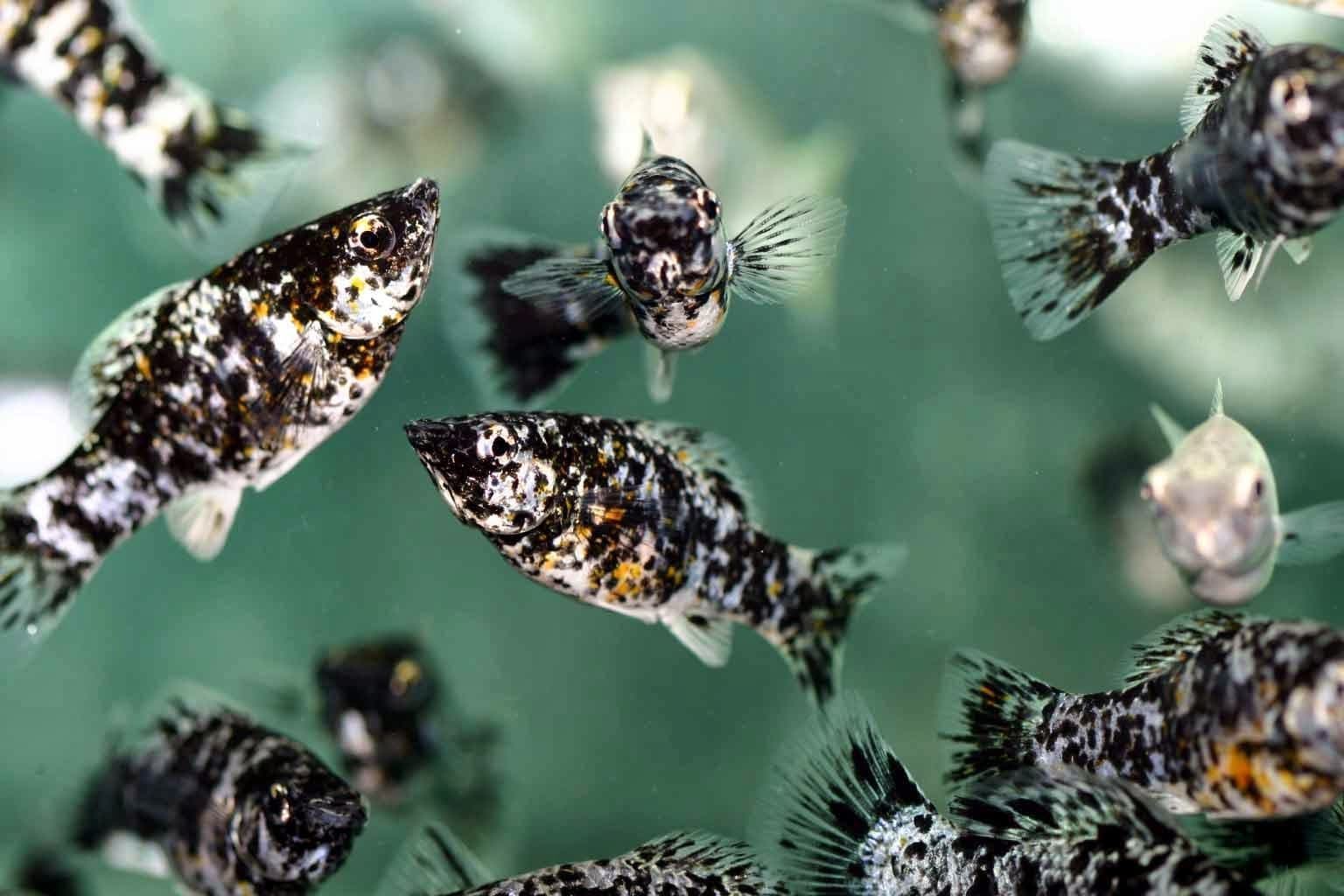
REPRODUCTION OF MOLLY IN AQUARIUM:
Guaranteeing stable conditions, Mollys reproduce in a very simple way.
As a general rule, it is preferable to keep two or three females per male so that they are not excessively harassed.
The gestation period is around 4 weeks.
With a single copulation they can produce several litters.
They are very prolific, which gives us an idea of the predatory pressure to which they are subjected, being able to generate between 30 and 150 offspring depending on the species and the female in question.
Like all poecilides they are ovoviviparous.
Before the female stops them, they break the shell internally and are born alive.
During childbirth they can come out of one and one or several at the same time.
Parturition can last between 30 and 60 minutes depending on the number of larvae.
Once the larvae appear, they run to take refuge as soon as possible among the plants so as not to be eaten by other fish in the aquarium.
Once the refuge is found, they will not go free swimming until the yolk sac is consumed.
What has been said about natural plants is important since the mother itself will prey on its own larvae.
If we are interested in obtaining the greatest number of offspring possible, the most appropriate thing to do is to use floating farrowing pens from which the female can be removed once the delivery is complete.
There are many commercial preparations for feeding larvae.
If we leave them free in the aquarium, they will feed on infusoria that live between plant leaves.
It is convenient to separate the recently given birth female so that she does not continue to be harassed by the males and can cause diseases.
From 4 weeks the fry can be sexed and it is the right time to return to the community aquarium without risk of being eaten.
Other articles that may interest you:

